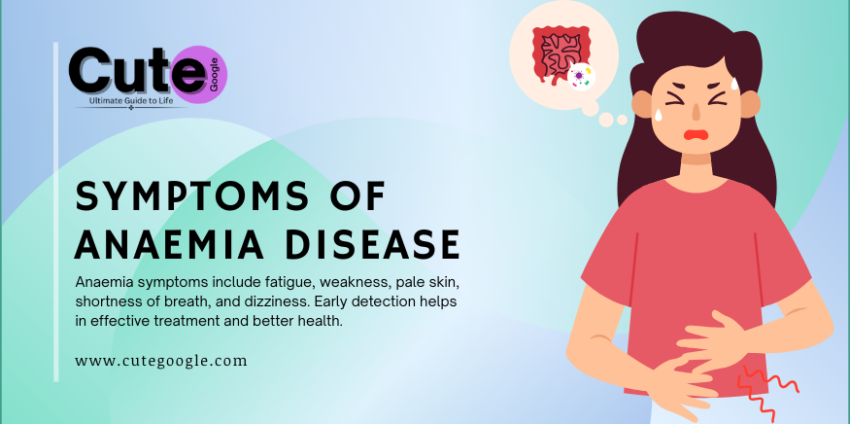Exploring Anemia: Signs, Root Causes, Classification, and Effective Techniques for Raising Iron Levels
What most individuals refer to as tiredness can also be considered fatigue. Feeling tired or having no energy, like experiencing weakness or lightheadedness, can happen after a long day’s work, or even a busy week. But if the lethargy persists for a time to the extent of becoming a bother, now that crankiness has a name, it could be resembling “anemia”.
According to some reports, anemia or in simple the lack of an adequate number of red blood cells is one of the most common blood related health axis. it is estimated that millions of people across the globe suffer from this illness day in day out without even realizing it.this raises some questions like what is anemia? what are the symptoms of anaemia disease? And what is it’s connection with the iron levels or what foods aids iron in the body.
So, let us understand in detail the concept of anemia along with anemic conditions, try to grasp the different types of anaemia, and finally explore practical, natural measures to maintain your blood wellbeing.
Do you constantly feel fatigued? Do you have unusually pale skin? Are you experiencing cold limbs? If you have answered yes to all of these questions, then you may have anemia.
Disease Anaemia Symptoms
Identifying symptoms of anemia disease may prove to be difficult since they are developed over a long period of time and due to stress or simply fatigue. However, knowing the symptoms can allow you to act upon them positively at an early stage. Here are some of the most frequent symptoms:
- Fatigue or low energy
- Pale or generally yellowish skin
- Shallow breathing even with lighter activities
- Feeling abnormal coldness in the hands and feet
- Dizziness or lightheaded moments
- Abnormally fast and uneven heartbeats
- Migraines
- Pain in chest
- Weak nails and hair or hair falling out
- Impatience in legs during rest at night
If you are experiencing multiple symptoms on a regular basis, make sure to reach out to a professional and measure your hemoglobin and iron levels.
Deficiency of Iron Symptoms Low
One of the main reasons why people suffer from anemia is the lack of iron levels. It is extremely important to have iron if you wish to generate hemoglobin, and in lieu of that, your red blood cell’s tasks can’t be processed.
Symptoms of low iron levels may include some distinctive signs that often overlap with symptoms of anemia:
- An unusual urge to eat non-nutritious things like ice, starch, or clay, known as pica.
- An inflamed or painful tongue.
- Loss of appetite. This is particularly common in children.
- Excessive fatigue not relieved by adequate sleep.
- Bruises or dark spots on the skin around the eyes.
Iron deficiency anemia is a result of a poor diet, persistent heavy menstrual periods, pregnancy, blood loss due to injury or surgery, and chronic conditions impacting the body’s ability to absorb iron.
Hemoglobin Guidelines
To understand anemia better, one needs to know what is considered as normal levels of hemoglobin.
Below are some general guidelines:
- Male adults: 13.8 to 17.2 grams per deciliter (g/dL).
- Female adults: 12.1 to 15.1 g/dL.
- Children: 11 to 16 g/dL.
- Pregnant women: A bit lower due to blood volume.
Your doctor is likely to diagnose you with anemia if your levels go below these ranges and may suggest iron supplements or changes in diet.
Different Types of Anaemia
Woting explains Not all anemia is the same. Each type has its distinct causes and treatments. Let us discuss them in detail.
- Iron-Deficiency Anemia
- The most frequent subtype.
- It stems from a deficient diet or heavy bleeding.
- Can be managed by supplementation with iron-rich foods.
- Vitamin Deficiency Anemia
- It is caused by insufficient vitamin B12, C, or folate levels in the body.
- It has a connection with diet or some absorption issues.
- It may lead to memory loss and tingling of limbs.
- Aplastic Anemia
- It’s a rare but severe case when an individual does not make an adequate amount of new blood cells.
- It may stem from infections, autoimmune disorders, or toxin exposure.
- Hemolytic Anemia
- This happens when the production of red blood cells exceeds their destruction.
- This may be due to genetic causes, autoimmune diseases, or infections.
- Sickle Cell Anemia
- A genetic disease primarily in African, Mediterranean, and Middle Eastern descents.
- Changes the round shape of red blood cells to crescent or sickle, which restricts blood flow.
- Chronic Disease Anemia
- Associated with long-term conditions such as kidney disease, cancer, HIV/AIDS, or rheumatoid arthritis.
- These diseases disrupt the process of red blood cell production.
Diagnosis is the basis of treatment owing to all requirements being different in each case.
What foods are good for iron?
Eliminating the onset of anemia or aiding the body while undergoing treatment is more easier through diet and nutrition. So what foods are good for iron?
Iron can be gotten in two dietary forms:
- Heme iron is derived from living animals and is more easily absorbed by the body.
- Non-heme iron is derived from plants and is gotten at a lower absorption rate, but is still helpful.
Foods high in iron include: Sources of Animals (Heme Iron):
- Beef or lamb red meat
- Chicken and turkey
- Fish especially shellfish (Oysters and Clams)
- Eggs
Plant-Based Sources (Non-Heme Iron):
- Spinach and kale
- Lentils and chickpeas as legunes
- Tofu and tempeh
- Nuts and seeds (especially pumpkin and sesame seeds)
- Brown rice, quinoa, and fortified cereals as whole grains
- Dried fruits such as raisins and apricots
Combine food sources rich in iron with vitamin C from citrus fruits and tomatoes for maximum absorption. Tea and coffee should also be avoided, as they block iron absorption.
Home Remedies for Preventing and Managing Anemia
- Maintain a healthy diet with proper iron intake.
Include food with both types of iron: heme and non-heme. They require vitamin C for better absorption.
- Use metal cookware.
Cooking in cast iron pans can increase the iron content in your meals.
- Check for other medical reasons.
Heavy bleeding during periods, certain gut disorders (like celiac or Crohn’s), and kidney problems can contribute to anemia.
- Take prescribed supplements only.
Your physician may prescribe supplements with iron, folic acid, or B12. Avoid self-diagnosis and treatment—too much iron can pose danger.
- Blood tests on a regular basis.
Monitoring hemoglobin and iron levels tracks the health progress for women, diagnosed vegetarians, and people with chronic illnesses.
- Keep moving, stay hydrated, and don’t forget to exercise.
The healthy blood flow contributes to proper circulation and oxygen delivery, which helps mild exercise and deep breathing.
Anemia in Women, Children and the Elderly
While anemia can affect people in multiple regions, under some circumstances, the following groups may become more vulnerable:
- The chances of women with child-bearing age becoming prone to anemia increases due to menstrual cycles and pregnancy.
- Extra iron is needed for the baby, meaning mothers are more susceptible to anemia and may need supplements.
- Iron deficiency anemia can impact children due to picking eating habits or growth spurts.
- Chronic disease or poor nutrition may cause older adults to develop anemia.
Every life stage poses unique hurdles to overcome, and consistently having iron in your diet can prevent future complications.
When to Seek Medical Help
Do not wait if you suspect being anemic. Untreated anemia can result in severe health issues like heart stress, developmental delays in children, complications during childbirth, or a heightened risk of infection.
Keep an eye out for:
- Constant tiredness
- Excessive breathlessness
- Palpitations
- Chest discomfort
- Skin turning pale or loose its color
Checking your hemoglobin count, iron, and vitamin levels through blood tests is easy, and many times, treatment is hassle-free upon identifying the problem.
Conclusion
Anemia can affect your body’s performance on a cellular level and should not to be brushed off as feeling tired. Understanding the symptoms such as low iron indicators along with anemia disease, is critical.
The bright side is that anemia can be treated in most cases, especially when it’s diagnosed early. Whether it is correcting what foods are good for iron, a nutritional imbalance, or an underlying condition, small tweaks can make a big difference.
Get regular checkups and don’t ignore the signs. Your body and blood will appreciate it.




